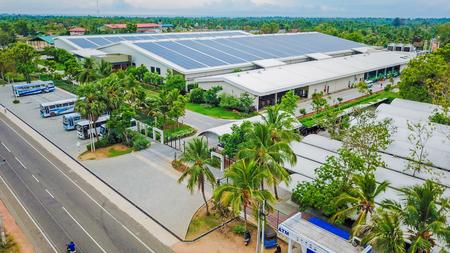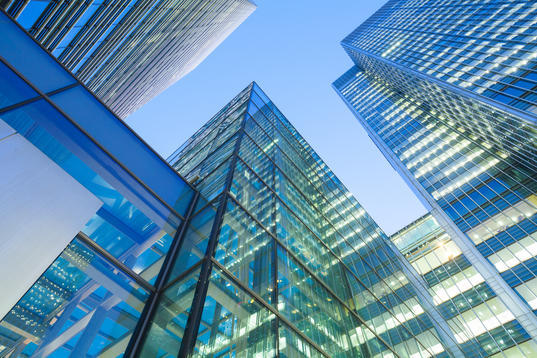India’s buildings sector accounts for around one fifth of the country’s total annual carbon emissions and, in the absence of pre-emptive mitigation policies, is projected to emit seven times more CO2 by 2050 compared with 2005 levels. Buildings sector decarbonisation is therefore key for the achievement of a sustainable low carbon Indian economy.
Voluntary corporate action in this area is gaining momentum and India-based corporates from across different economic sectors, although still refining approaches and building knowledge, are beginning to redesign their climate strategies around decarbonisation of their built assets.
To this end, on 13th July the Climate Group hosted the annual EP100 India Members’ Roundtable. The gathering provided a collaborative space for leading India-based corporates to hear about the challenges and opportunities in making a commitment to decarbonise a corporate portfolio of built assets. Attendees also heard how to make such a commitment, via the EP100 and World Green Building Council’s Net Zero Carbon Buildings commitment.
Attending EP100 members included: Swaraj Engines Ltd; Mahindra & Mahindra Ltd; Mahindra Vehicle Manufacturers Ltd; NatWest; Godrej & Boyce; Brandix; Godrej & Boyce; Godrej Industries Ltd; JSW Cement Ltd; H&M; and, UltraTech Cement Limited.
Brandix’s Net Zero Carbon Buildings Journey
Brandix, a Sri Lankan-headquartered apparel manufacturing company with operations in India and Bangladesh, provided insights on how they are achieving net zero carbon emissions across their corporate built assets in Sri Lanka.
Brandix began their journey in June 2019 by committing to achieve net zero operational carbon emissions across their portfolio by 2030 through the Climate Group’s EP100 initiative, which is delivered in partnership with the World Green Building Council.
After robust environmental impact baselining, Brandix articulated a new 2023 sustainability strategy, around three north star goals – Air (i.e. net zero carbon energy and emissions), Water and Earth – designed to eliminate the company’s biggest environmental impacts first. As Brandix’s Naadia Buhary, Assistant Manager, Sustainability said: “We wanted to understand what our primary impacts were on the environment and [through environmental impact baselining] realised that energy, emissions, water and waste were the biggest.”
With their net zero carbon buildings commitment in place, Brandix’s facilities managers are now working closely with senior decision makers to implement decarbonisation measures. Net zero carbon at Brandix’s Sri Lanka facilities is being achieved through a two-pronged approach which, first and foremost, focuses on energy efficiency as a ‘first-fuel’ – involving upgrades to equipment and working practices - and, secondly, focuses on on-site renewable energy generation.

Batticaloa – the World’s 1st Net Zero Carbon Apparel Manufacturing Facility
In September 2019 Brandix’s flagship Batticaloa facility became the world’s first net zero carbon certified apparel manufacturing facility, achieved through energy use optimisation and renewable energy generation.
After energy simulations to strategically understand where emission reductions could be best realised, Brandix installed innovative lighting solutions such as solar tubing, together with the use of low emissivity glass windows. This technology enabled the transmission of abundant light to the factory floor (thereby helping employees achieve product quality standards) whilst also eliminating heat transmission and improving working conditions. Other key technologies included the installation of improved fan cooling units (FCUs), air handling units (AHUs), and the use of magnetic bearing chillers (which were found to be ≈30% more energy efficient than conventional water cooled chillers). Building design was also examined with Brandix ensuring the use of an east-west building orientation to minimise heat gains.
Batticaloa’s success, Naadia explained, was also down to smarter, real-time energy monitoring and management through a building management system. This allowed facility managers to better optimise energy usage on the fly.
After energy efficiency, Brandix then turned to solar power to provide 100% of Batticaloa’s remaining energy demand. 1.65 MW of rooftop solar capacity was installed which, at the time of installation, was the largest in Sri Lanka.
Raising Ambition and Looking to the Future
Brandix have thus far achieved a 21% reduction in Scope 1 & 2 carbon emissions and a 22% reduction in carbon intensity, both compared to a 2017/18 baseline, and Naadia believes that making the Net Zero Carbon Building commitment with EP100 and WorldGBC in June 2019 was instrumental to their success.
Looking further into the Climate Decade, Brandix are now excited to meet 100% of their final energy consumption in Sri Lanka by renewable sources by 2023, and are studying the prospect of achieving net zero carbon at their Indian factories. Although the same two-pronged decarbonisation strategy is expected to hold true, Naadia highlighted a number of barriers, such as that the Indian government has a relatively stringent generating capacity limit for rooftop solar installations. This means that, in order to fully decarbonise facilities in a commercially viable manner, companies may have to find more innovative approaches, such as leasing additional third-party roof space off-site. She said “It’s not as simple as it is in Sri Lanka”, adding “they have significant roof space [eligible for rooftop solar installation] so it’s less challenging.”
Naadia believes that companies in India and the wider region should continue to work collaboratively, via climate action initiatives such as EP100 and the WorldGBC, to overcome these future challenges.
“Sustainability and business are two sides of the same coin”
“Sustainability and business are two sides of the same coin”
Godrej & Boyce's Energy Productivity Journey
EP100 is also a stakeholder network of corporates leading the broader charge on smart energy use, and therefore the India Members’ Roundtable provided a space for members to share challenges and lessons learned on this aspect of corporate climate action.
Attendees heard from EP100 member Godrej & Boyce on their commitment to double energy productivity by 2030 relative to a 2017 baseline.
Going back to 2007, Godrej & Boyce have made significant progress in realising greater energy & financial savings through efficiency measures, alongside co-benefits such as increased market competitiveness and better working conditions for employees. By positioning themselves as a leader on smart energy use, Godrej & Boyce have also been able to leverage their supply chain to take similar action.
Pravin Rawool, AVP & Business Head MEP at Godrej & Boyce believes it makes “business sense” to focus on reducing carbon emissions and do more with less energy. He highlights the integration of new energy efficient technologies alongside the use of real-time energy data analytics as keystone to effective corporate action on smart energy use.
For example, in 2010 Godrej & Boyce constructed a new facility which has since become India’s first net zero carbon building, awarded by the Indian Green Building Council in 2019. Over the last three years, the building’s total annual energy demand has reduced by 70 MWh, made possible through the use of real-time energy monitoring on consumption from transformer to distribution.
Both these case studies highlight the innovative work that EP100 members are doing to help achieve a net zero carbon society by 2050.
If you would like to learn more about joining the global initiative and its benefits, please click here for more information. To learn more about our work in India, please write to Avinash Acharya, Manager, Energy Transitions at [email protected].
